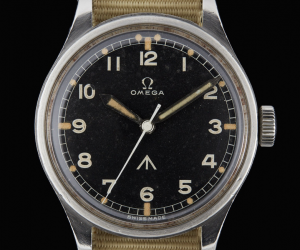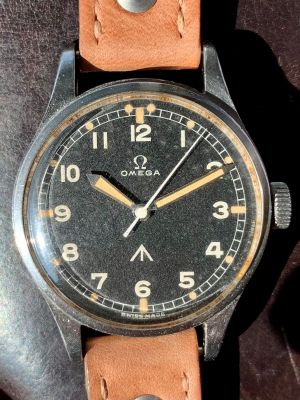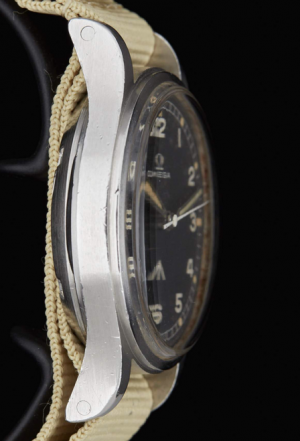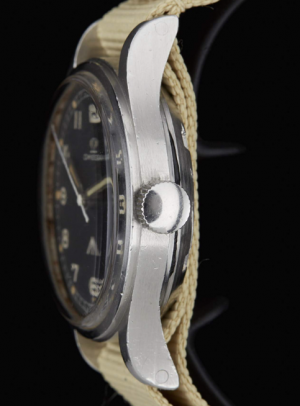Omega RAF 53 Thin Arrow


Omega RAF 53 Thin Arrow
Ref: 2777-1. 6B/542
Cal: 283 manual wind
The broad arrow, or pheon, has its roots in heraldry, when it adorned the shields of knights as they charged into battle. During the reign of Henry VIII, it was used by the Board of Ordnance to denote that whatever it adorned—be it a cannon, a nail, or a tree destined to be a ship’s mast—was paid for out of the royal coffers. To today's watch collectors, an arrow on the dial of a vintage watch signifies that the timepiece was once the property of Her Majesty’s Government.
While many pieces bear the mark, and while collectors comb through countless listings in pursuit of this little symbol, the watches produced by Omega under military contract in the 1950s command a cult following.
In 1953, Omega built timepieces under guidelines issued by British Ministry of Defense. These guidelines were strenuous, and covered every component of the watch from the movement to the dial and hands. For example, the case could not have any highly polished parts, and the movement had to be protected from magnetic fields by an inner dust cover.
As far as the dial was concerned, the standard required that they be black with white numerals, and have skeletonized hour and minute hands filled with luminescent material, and a white seconds hand.
Over the years, several different manufacturers supplied these watches according to MOD standards, from well-known brands like Jaeger-LeCoultre and IWC, to lesser-known companies like Smiths.
But the variants produced by Omega in that single year of 1953—bearing an Omega reference number of 2777-1 and a NATO number of 6B/542—have an interesting bit of history that set them apart from the others.
When these watches left the factory, the luminescent material that adorned the indices and hands was Radium. However, sometime in the 1960s, the watches were returned to the manufacturer and the Radium dials were exchanged for tritium. When the dial was changed, the pheon was repainted, this time thicker, and an encircled T was painted on to show that the luminescent material was tritium.
These thicker arrows have led to the nickname “Fat Arrow” among watch collectors.
However, whether out of negligence, disobedience, or as the result of a routine service before the MOD issued this decree, some examples exist with—not a fat arrow—but the thin arrow that was on the watches when they left the Omega factory.
This particular Omega 6B/542 is one of those.
We can’t say how or why this particular watch escaped what was supposed to be an order obeyed by all, but we are certainly glad it did. Perhaps it was in fact an early service replacement, put on before the strictures against Radium dials were put in place—without a crystal ball, we can’t be entirely sure. But the fact remains that here it has sat, unchanged and blessedly untouched, for the better part of five decades.


